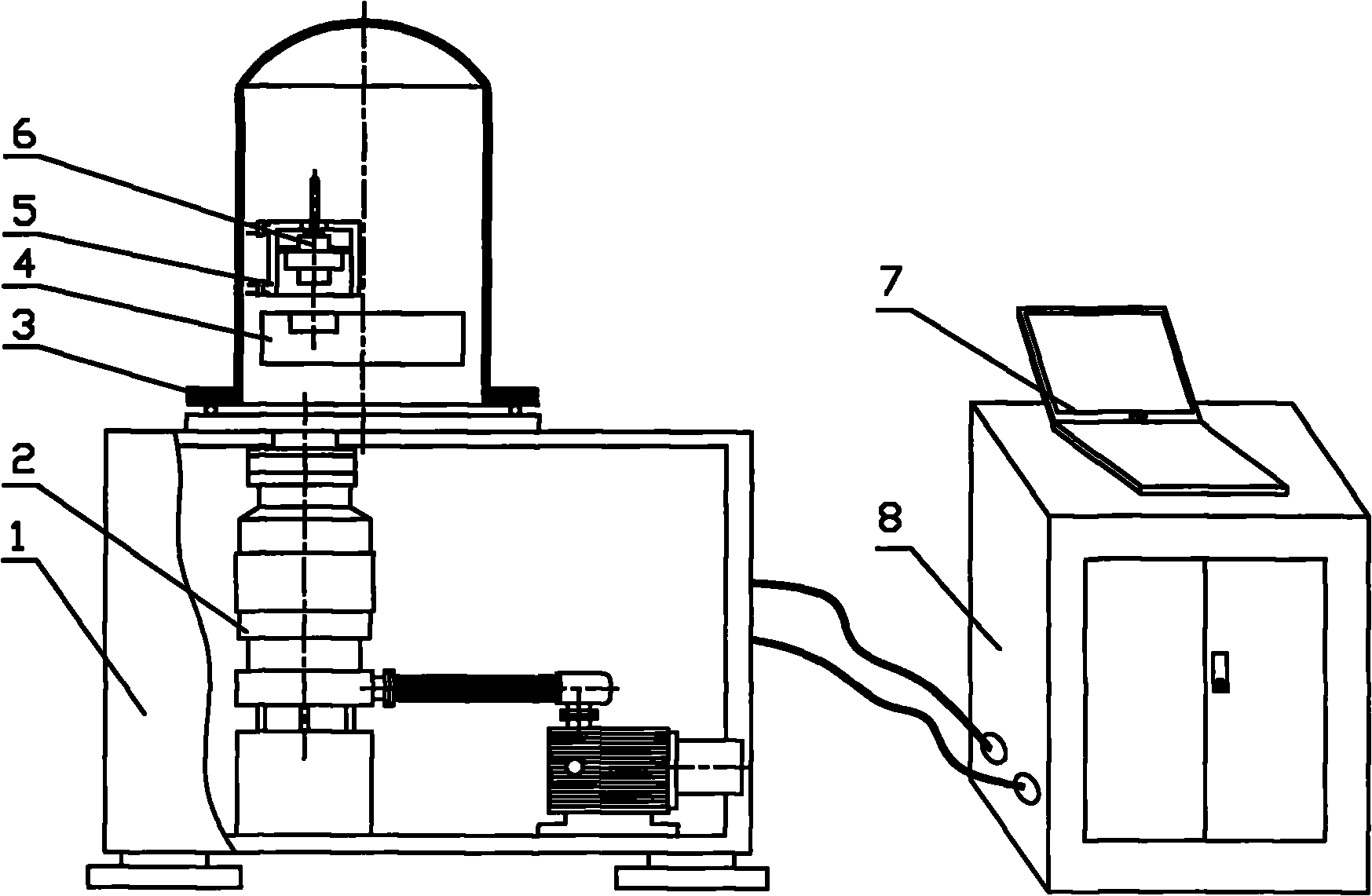Method for monitoring sensitive low-temperature surface pollution of spacecrafts
A surface contamination and spacecraft technology, applied in the aerospace field, can solve the problems of non-metallic material outgassing or plume jet deposits that cannot be characterized, and achieve stable and reliable test process, clean environmental conditions, and good repeatability. Effect
- Summary
- Abstract
- Description
- Claims
- Application Information
AI Technical Summary
Problems solved by technology
Method used
Image
Examples
Embodiment
[0031] 1) The test sample is a space-grade silicone rubber material often used by spacecraft, which is prepared into a granular shape of 1mm×1mm×1mm, 100g is loaded into the thermal control sample stage 4, and the angle of view of the quartz crystal microbalance detector 6 is adjusted to the angle of the sample. 180°, connect relevant water, electricity and gas auxiliary equipment, adjust the balance communication, and close the vacuum chamber 3;
[0032] 2) Turn on the vacuum pumping system, start the cold trap, start the mechanical pump, and start the molecular pump until the vacuum degree of the system is less than 1×10 -3 Pa;
[0033] 3) Turn on the liquid nitrogen refrigeration system 5, and monitor the temperature change of the quartz crystal microbalance until the surface temperature of the quartz crystal microbalance is 80K;
[0034] 4) The thermal control sample stage 4 is controlled by the computer 7, the space-grade silicone rubber material is heated to 125°C for 2...
PUM
| Property | Measurement | Unit |
|---|---|---|
| Sensitivity | aaaaa | aaaaa |
Abstract
Description
Claims
Application Information
 Login to View More
Login to View More - R&D
- Intellectual Property
- Life Sciences
- Materials
- Tech Scout
- Unparalleled Data Quality
- Higher Quality Content
- 60% Fewer Hallucinations
Browse by: Latest US Patents, China's latest patents, Technical Efficacy Thesaurus, Application Domain, Technology Topic, Popular Technical Reports.
© 2025 PatSnap. All rights reserved.Legal|Privacy policy|Modern Slavery Act Transparency Statement|Sitemap|About US| Contact US: help@patsnap.com


